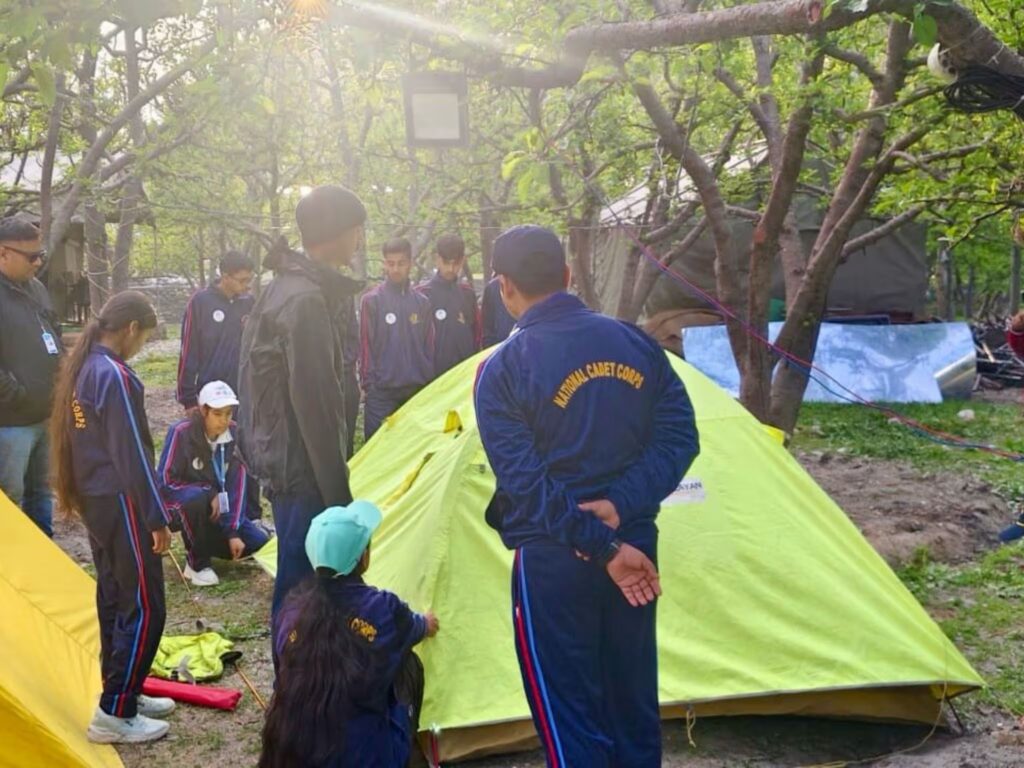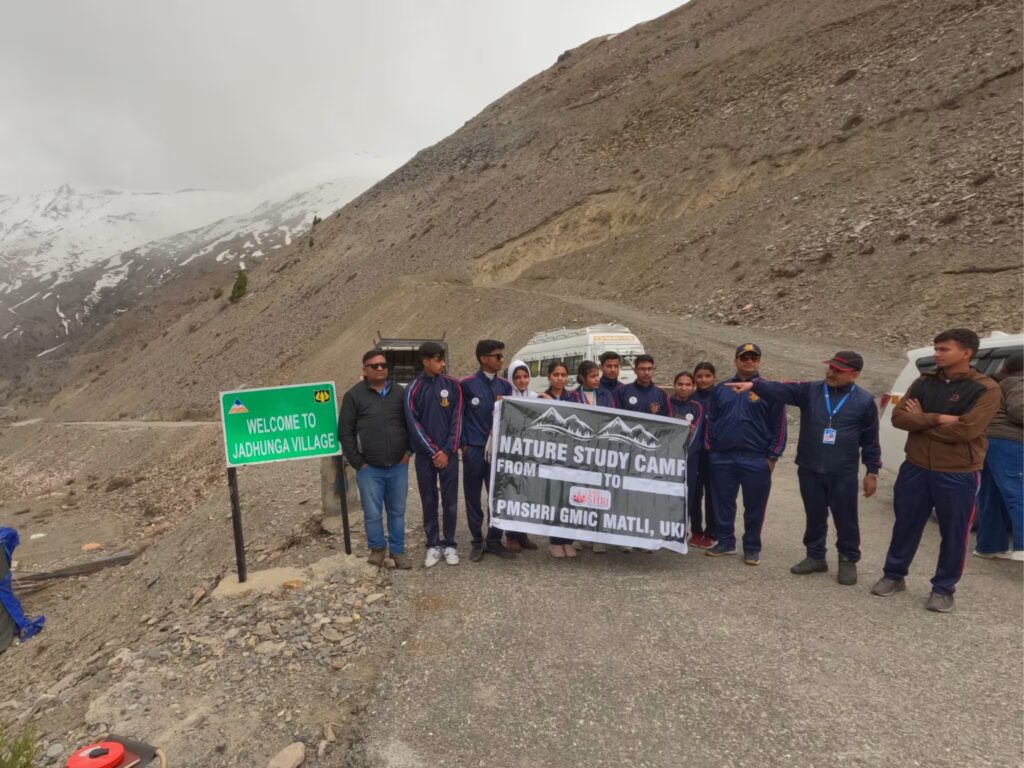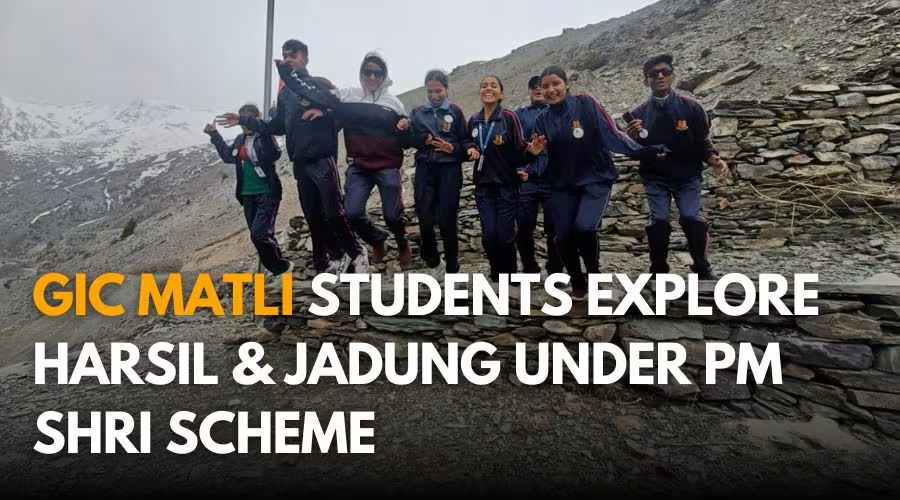PM SHRI (PM Schools for Rising India) is a centrally sponsored scheme launched by the Government of India to transform over 14,500 schools across the country into model institutions. These schools are not just about academic excellence but aim to provide holistic education by ensuring every child feels safe, cared for, and inspired to learn.
The idea is to turn schools into learning hubs where modern infrastructure, a safe environment, and interactive learning methods create a complete educational experience. PM SHRI Schools will showcase the vision of the National Education Policy 2020 and help students become responsible, aware, and skilled citizens of India.
The scheme runs from 2022 to 2027 and will benefit more than 20 lakh students.
You can learn more about PM SHRI Schools here: PM SHRI Schools Official Website
Student Trip to Harsil and Jadung
GIC Matli, one of the institutions selected under the PM SHRI scheme, is dedicated to offering its students opportunities that go beyond the classroom. From 23rd April to 26th April, the school organized an educational adventure for its students to Harshil Valley, Nelong, Jadung, and nearby Himalayan villages.
This unique trip was powered by us at Himalayan Dream Treks, which curated a learning experience for the students in the lap of the Himalayas.

A Journey into Nature and Culture: Day-by-Day Highlights
Day 1 – 23rd April: The Journey Begins
The students began their adventure by learning the basics of outdoor living. They were introduced to tent pitching, types of tents like the Dome Tent, and how to use sleeping bags and mats effectively. This hands-on training set the tone for what was to come real-world learning beyond the classroom.

Day 2 – 24th April: Walking on Snow
On the second day, students moved deeper into the snowy regions and had their first real experience with a glacier. They also learned about essential mountaineering gear like:
- Crampons
- Gaiters
- Ice Axes
These tools are crucial for walking safely on snow and ice. The students were thrilled to try them out and understand their uses. It was a true lesson in outdoor survival and exploration.
Day 3 – 25th April: Learning Skills for the Mountains
Day three was all about learning technical mountain skills. Students learned about using a carabiner, rope, knots, cooking in the outdoors, and the importance of teamwork during such activities.
They also visited the Gartang Gali, a historic hanging wooden bridge built on a sheer cliff face, which offered both a thrill and a lesson in traditional Himalayan engineering.
Day 4 – 26th April: A Journey to Remember
The final day marked the return journey, but the students went back with hearts full of memories, new learnings, and a sense of connection with nature that textbooks can never teach.
Exploring Himalayan Culture and Heritage
During the trip, the students explored several culturally rich villages such as:

These villages are home to the Jadh Bhotiya tribe, a community known for its unique customs, traditions, and stories. The students interacted with the locals, heard about the history of the Jadh Bhotiya people, and learned about their geographical location near the Indo-Tibetan border.
(Who Are the Jadh Bhotiya? The Jadh Bhotiya are a unique tribal community that has lived in the high Himalayan regions of Uttarkashi, especially near the India-China border (including villages like Jadung, Nelong, and Bagori). They are one of the few Indian communities with Tibetan roots, and their lifestyle reflects a beautiful blend of Hindu and Buddhist cultures.)
They also understood how these remote communities have adapted to harsh climates and high altitudes over generations. It was a living lesson in geography, sociology, and history– all in one.
What the Students Took Back
This trip was more than just a school outing. It was an experience that:
- Built confidence and independence
- Instilled environmental awareness
- Introduced students to outdoor education and leadership
- Encouraged them to explore careers in mountaineering, trekking, and adventure sports

Leave a Comment